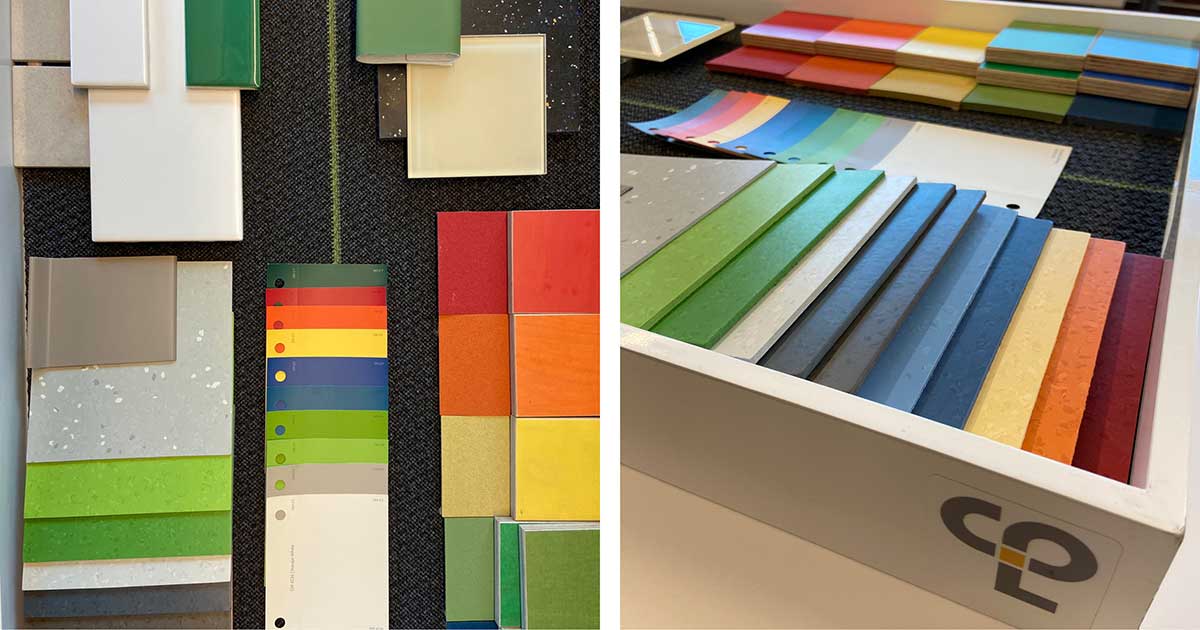Share This Story
While the far-reaching impacts of the COVID-19 pandemic are affecting many aspects of our lives, one area hit particularly hard is education. In March of 2020, school districts across the country (and around the world) experienced a major educational disruption as schools closed and remote learning practices were quickly put into place for more than 55 million children.
As students, teachers, administrators and parents all look forward to schools eventually reopening, CPL has remained mindful of both the short- and long-term effects this novel coronavirus will inevitably have on school districts. More specifically, our K-12 Education team has been hard at work re-imagining the future design of classrooms and instructional spaces to ensure they accommodate public health needs, and still facilitate an engaging learning environment for students.
Creative consideration is being given to a long list of elements that have an impact on the health and safety of students and teachers. This list includes classroom layouts, furniture selection, materials and finishes, touchless fixtures, indoor air quality, lighting technology and cleaning protocols – just to name a few.
New Classroom Layouts
The Centers for Disease Control and Prevention (CDC) has drafted new guidelines for how schools and other organizations can safely reopen. As designers, it is our job to follow these recommendations and ultimately rethink classroom layouts to ensure they are safe, yet still support active and engaged modes of learning.
Finding creative ways to rearrange desks and common seating spaces is one way to approach this. Another includes the use of visual aids and cues to help demonstrate physical spacing as well as illustrate traffic flow.
In younger grades, for example, the use of large, area rugs with distancing indicators can help encourage physical space between students. For older grades, the creation of one-way directional indicators could be vital in minimizing circulation paths.
Strategic Furniture Selection
Reconfiguring classroom layouts will undoubtedly be simpler if schools have flexible, agile furniture designed for easy manipulation. Whether it is tables and desks on casters, portable room dividers or mobile white boards, strategic furniture selection can play a role in creating safe, highly adaptable learning environments.
Utilizing light weight, movable furniture can certainly help to maximize the space between students. In addition to rearranging desks six feet apart, you can also turn desks to face in different directions (rather than face each other) to help reduce transmission caused from virus-containing droplets (ie. from talking, coughing, sneezing, etc.). Mobile teaching carts or stations that move with the teacher can have similar benefits.
Furthermore, installing physical barrier screens or panels, such as sneeze guards and partitions, particularly around desks can help limit the spread of germs in tight spaces. Schools can also be creative with the furniture they already have by using shelf units, cubbies or other storage pieces to create low barriers where they are needed.
Safe Materials and Finishes
CPL has been reviewing typical material selections to ensure that we continue to reject finishes that are on the “red list” of building materials. This “worst in class” list includes commonly used chemicals that can pollute the environment as well as cause harm to students and faculty.

Using resources like mindful MATERIALS and following certifications like UL, GREENGUARD and LEED, we have been actively researching sustainable products from leading manufacturers that are vetted by industry experts. This strategic selection process is especially important when choosing the materials used for high-touch areas like door handles, countertops, railings, etc. Our team is focused on selecting finishes that are durable, easy to clean and likely to help prevent the future spread of infections and viruses.
Higher Indoor Air Quality
A building’s mechanical systems are the principal drivers of both safety and comfort. This makes improving indoor air quality another priority for many school districts as it can often lead to better health and better learning outcomes.
CPL utilizes a holistic approach to building system evaluation and seeks out ways to enhance HVAC system features and components including ventilation, air distribution, air filtration, as well as temperature and humidity control. Centralized air handling systems, for example, provide the opportunity to incorporate multiple system enhancements that can result in substantial improvements in indoor air quality. Additionally, ultra-violet germicidal irradiation (UVGI), bipolar ionization, electrostatic filtration, and improved filtration efficiency can also be considered as possible system improvements.
While applying these concepts within a classroom served by unitary HVAC equipment (such as unit ventilators) is more challenging, enhancing a room’s air circulation with electrostatic filtration or adding bipolar ionization in recirculation ductwork are both viable solutions.
Innovative Lighting Technology
With an increased focus on cleanliness and hygiene likely being a long-term goal of our school districts, we can explore recent advances in lighting technology, which have helped enhance many cleaning and disinfection procedures. For instance, antibacterial lighting is becoming a popular solution due to its ability to inhibit the growth and regrowth of bacteria and other types of microbes such as fungi, yeast, mold and mildew.
There are many areas in a K-12 setting that could benefit from this type of lighting technology including classrooms, locker rooms, weight/exercise rooms, cafeterias and restrooms. And while antibacterial lighting has not been proven to kill viruses, it can eliminate harmful microbes found in high density areas, reducing the risk of associated illnesses when used in conjunction with traditional cleaning methods.
Final Thoughts
If nothing else, the rapid spread of COVID-19 has demonstrated the importance of designing healthy and resilient buildings. Schools are at the heart of our communities and should be “safe havens” for all who step inside them. As designers, we take the health and safety of building occupants very seriously and we remain committed to managing the impact of this health crisis on our K-12 facilities. A quick fix, ‘band aid’ approach to this does not exist. Our goal is to remain thoughtful, flexible and creative in addressing both pressing and future needs.
